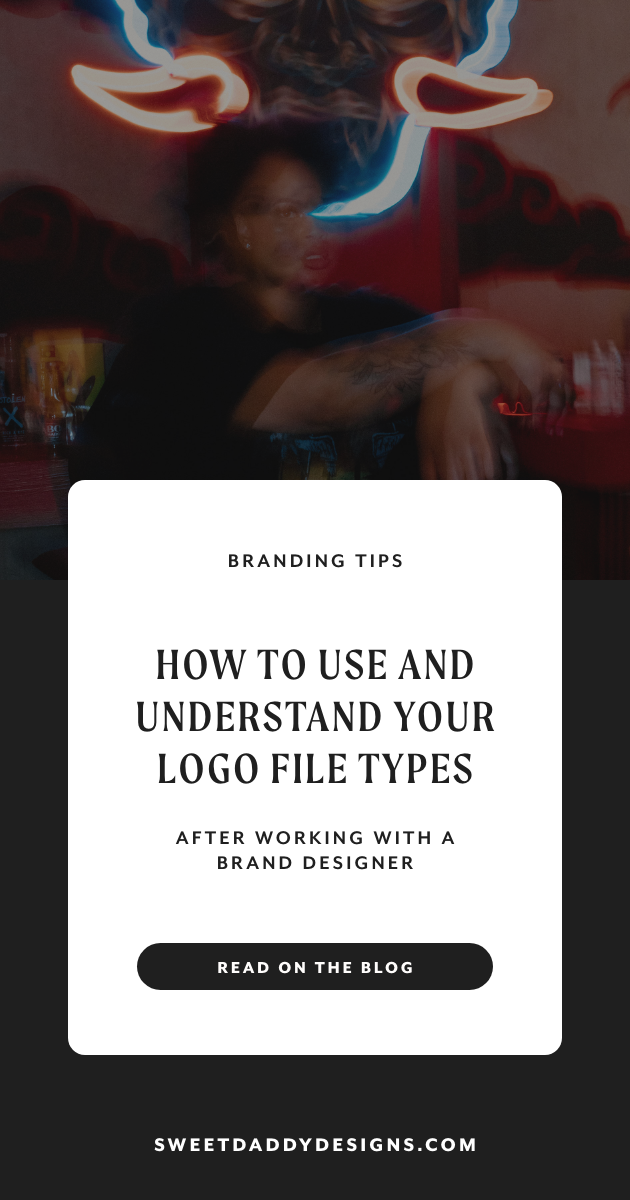So you’ve recently received your brand files from your designer and are ready to start implementing your brand. However, you’re not sure how to use your logo file types to ensure you don’t mess up your designer’s hard work. I’ve put together a quick logo file guide to help you out if you’re currently in this situation.

PNG
PNG files are the logos, graphics, and icons that support a transparent background. These are best used on websites, social media, graphics, and logos. Sometimes, a printer might ask for this file but it is less common. After the logo is designed and ready for export the image is compressed and converted into a PNG file. Because of this, PNG files are usually larger than other types of files like JPEGs and GIFs.
Where to use it
- Social media icons, highlights, and logos.
- Website illustrations, icons, charts, and logos.
- Print (Logos & illustrations)
JPEG
Large images or photos are more commonly used with JPEG files. JPEG files are popular among photographers because it delivers high-quality photos with small file sizes. Because of this, JPEGs are great to use online when you want your website to load fast.
These don’t support transparent backgrounds. Photographers use this file when editing and exporting images in photoshop. JPEGs can be resized, larger or smaller, without losing the crisp quality of the image. However, I usually don’t hand these files over to my clients, but this is still great info to know.
Where to use it
- Websites (images)
- Web Publishing (blog posts)
- Print (High-Quality Images)
SVG
SVG files stand for Scalable Vector Graphics and can be resized multiple times (big or small) without losing their sharp appearance. These files are perfect for website icons or complex designs that could potentially make very large-sized files.
Where to use it
- Logos on websites
- Icon designs on websites
- Illustration design on web, email, or blogs
PDF Files are a great way to send files or documents. Some graphic designers usually send contracts and invoices via PDF but I send my clients logo files, document files, or brochure files in the PDF format. PDF files are super easy to share and almost anyone can open this file on any of their devices (web, desktop, or phone).
Where to use it
- Printed documents like stationery, brochures, or brand guidelines.
- Printed merchandise like clothing, stickers, or hats.
So you just wrapped your brand project and are looking for ways to use your logo file types to make sure your branding is cohesive? Your next steps could look like this:
- Update your website and social media to include your new and improved branding
- Get some t-shirts or tumblers printed to hand out to friends.
- Update your process to include your new color palette and logos.
Looking for other ways to keep your brand cohesive after your brand project? Look into our consulting service.






